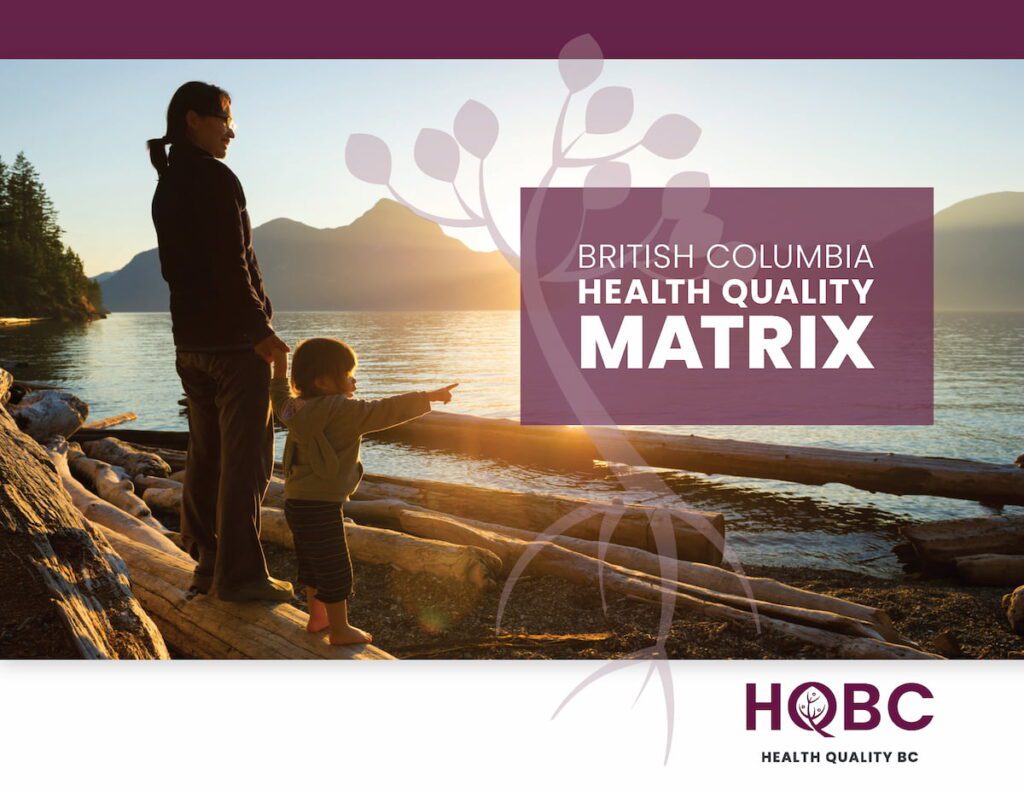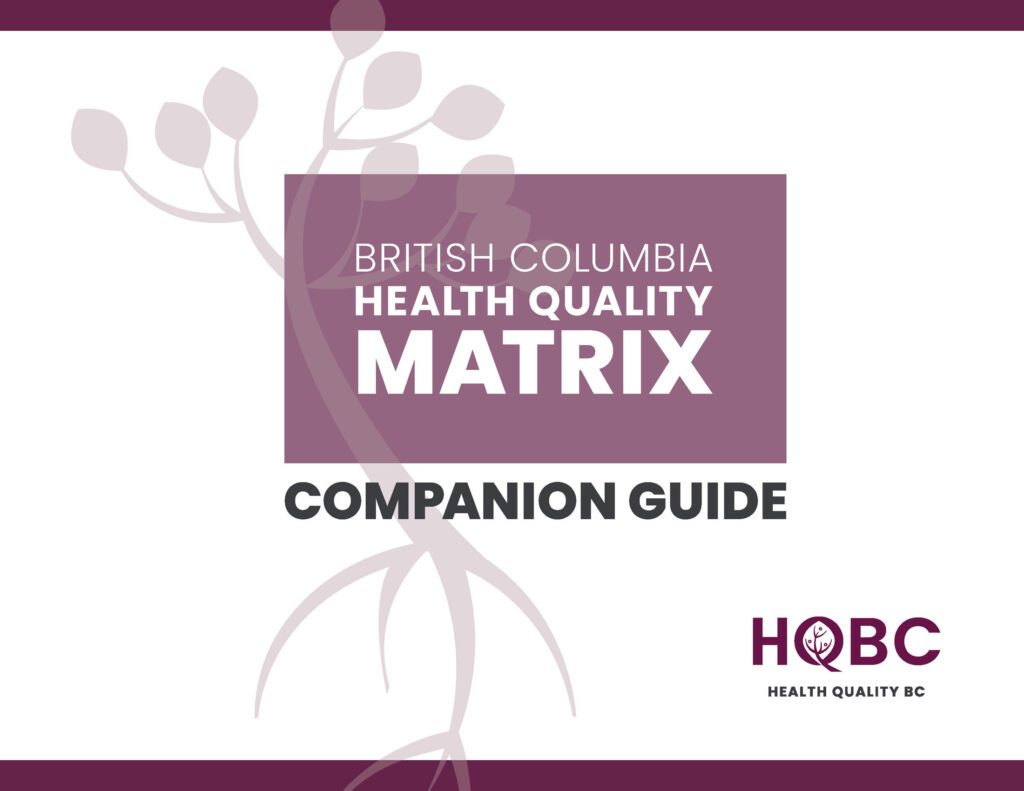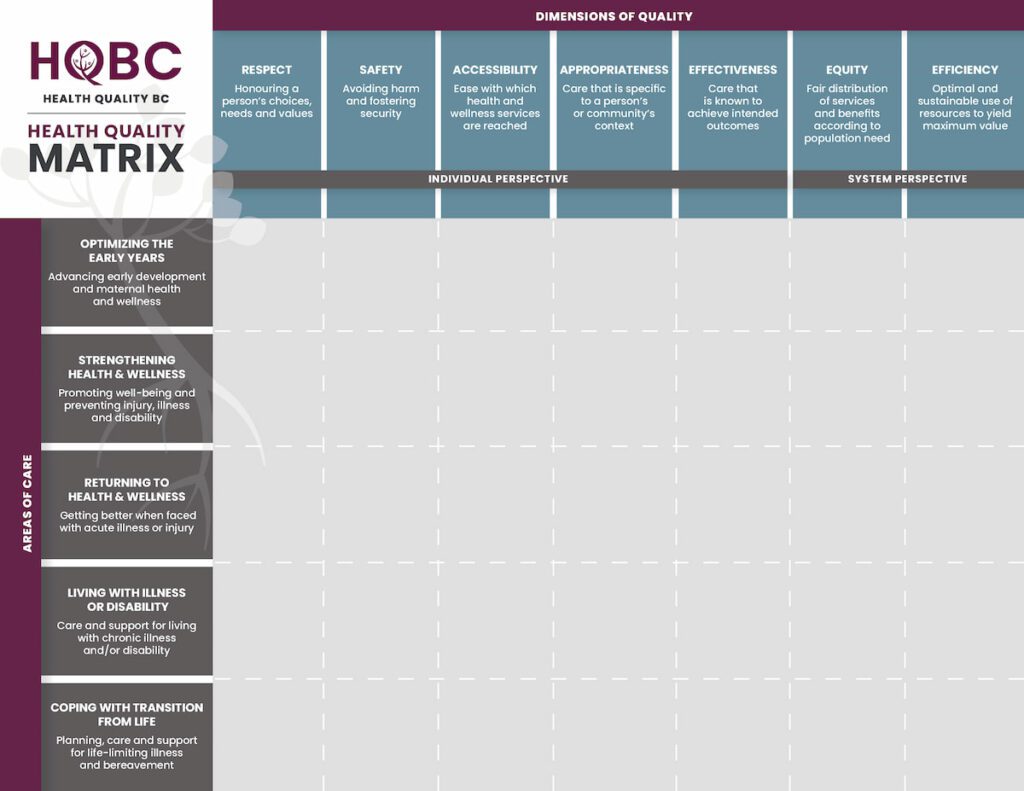Our BC Health Quality Matrix provides a shared definition of quality for British Columbia’s health care system.
That means all health and wellness services, anywhere in the province, have a consistent foundation from which to support people and their communities to thrive.
We first published the Matrix in 2009, after which the definition of quality was adopted by the province’s health authorities, Ministry of Health and many health organizations when setting priorities and caring for people. We published an updated version in February 2020 which ensures British Columbia’s vision of high-quality care aligns with the latest evidence and honours the history and teachings of Indigenous Peoples in the province.
BC Health Quality Matrix
BC Health Quality Matrix Companion Guide
BC Health Quality Matrix Visual Tool
Updates to the BC Health Quality Matrix
In February 2020, the Matrix was re-published with updates which emphasize the link between social determinants of health and quality, stress the importance of the early years of life as integral to health and align with the health care system’s focus on promoting wellness.
The updates also embed Indigenous perspectives on health and wellness and identify what is possible when Indigenous and non-Indigenous worldviews are welcomed. This inclusion is in alignment with BC’s commitment to fully adopt and implement the United Nations Declaration on the Rights of Indigenous Peoples, and the Calls to Action of the Truth and Reconciliation Commission.
Throughout the BC Health Quality Matrix, the concept of health quality has been broadened to include health and wellness, and focus has been placed on the whole person. Additionally, the concept of care as relational has been strengthened, and core values of cultural safety and humility as well as person- and family-centred care have been enhanced.
If you’re familiar with the previous version of the Matrix, some of the specific updates include:
- The Respect dimension (previously named Acceptability) now more clearly honours a person’s choices, needs and values.
- The Safety dimension now includes fostering security and trust, in addition to avoiding harm.
- The Equity dimension now recognizes that providing equitable care requires understanding and recognizing differences in people’s histories and experiences.
- A new Area of Care – Optimizing the Early Years – accounts for the critical role of the early years of life.
How to Use the BC Health Quality Matrix
The Matrix provides a common language and understanding about quality for all those who engage with, deliver, support, manage and govern health and wellness services. Having a shared definition for BC facilitates a coordinated approach to thinking about the multiple Dimensions of Quality, how the dimensions relate to one another, and responsibilities throughout a person’s health and wellness journey.
It also enables the development of metrics that comprehensively measure quality across the continuum of care and across dimensions. While all the parts of the Matrix are interconnected, considering the different dimensions and areas is a useful way to think about and measure quality. Learn more about how to apply the Matrix in our companion guide.
See the BC Health Quality Matrix in Use
Using the BC Health Quality Matrix to Pivot to Virtual Care
A Focus on Health and Wellness
When the Matrix was updated in 2020, we ensured it aligns with the health care system’s focus on promoting wellness. This means addressing people’s needs while also supporting them to stay well, build on their strengths and thrive.
Supporting health and wellness requires us to consider the whole person. This includes their physical, mental, emotional and spiritual well-being. It also includes the broader determinants that impact their well-being, such as past and present familial, social, cultural and environmental context.
And when we talk about supporting people’s health and wellness we mean the many connections, treatments and services that encompass providing care. Relationships are at the core of all these interactions, including those with patients and communities, among providers and within care teams. A key way to address this relational nature of care is to practice cultural humility*.
*Cultural humility is a process of self-reflection to understand personal and systemic biases and to develop and maintain respectful processes and relationships based on mutual trust. Cultural humility involves humbly acknowledging oneself as a learner when it comes to understanding another’s experience.1
Equity-Oriented Health Care
References
- First Nations Health Authority. Cultural Humility [Internet]. 2020 [cited 2020 Jan 1]. Available from: https://www.fnha.ca/wellness/cultural-humility





